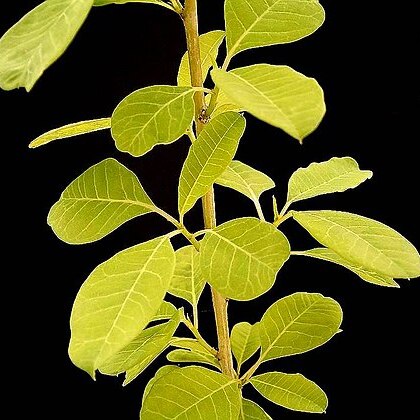Leaves with a petiole to 12 mm long, usually pubescent on young leaves, with long spreading hairs; stipules glandular, conspicuous, reddish; lamina to 4.5(6) × 3 cm, elliptic, rounded and minutely apiculate at the apex, abruptly cuneate at the base, entire, midrib prominent beneath, young leaves pubescent towards the base.
Cyathia c. 3 × 5 mm, with funnel-shaped involucres; glands 5, c. 1.5 × 2.5 mm, transversely elliptic, yellowish-green, touching; lobes c. 1 mm long, subquadrate, margin denticulate.
Capsule to 8.5 × 10 mm, deeply 3-lobed with a slightly depressed apex, green often tinged with purple, exserted on a reflexed, usually puberulous, pedicel to 10 mm long.
Cymes reduced to solitary, axillary subsessile cyathia, surrounded at the base by 4–8 scarious bracts, c. 2 × 1.5 mm, with finely ciliate margins.
Female flower: ovary glabrous, subtended by an obvious 3-lobed perianth; styles 2 mm long, joined for one-third, with spreading bifid apices.
Seeds c. 5.5 × 4.5 mm, ovoid, slightly dorsi-ventrally compressed, smooth, pale grey; caruncle cap-like, 2.5 mm wide, yellow.
Erect or occasionally scandent woody shrub to 3 m high, with a smooth shiny bark; young branchlets pubescent.
Shrub or small tree, up to 3 m high, many-stemmed, woody. Leaves ovate to elliptic, up to 55 x 32 mm.
Male flowers: bracteoles deeply laciniate, margins ciliate; stamens 3.5 mm long.

